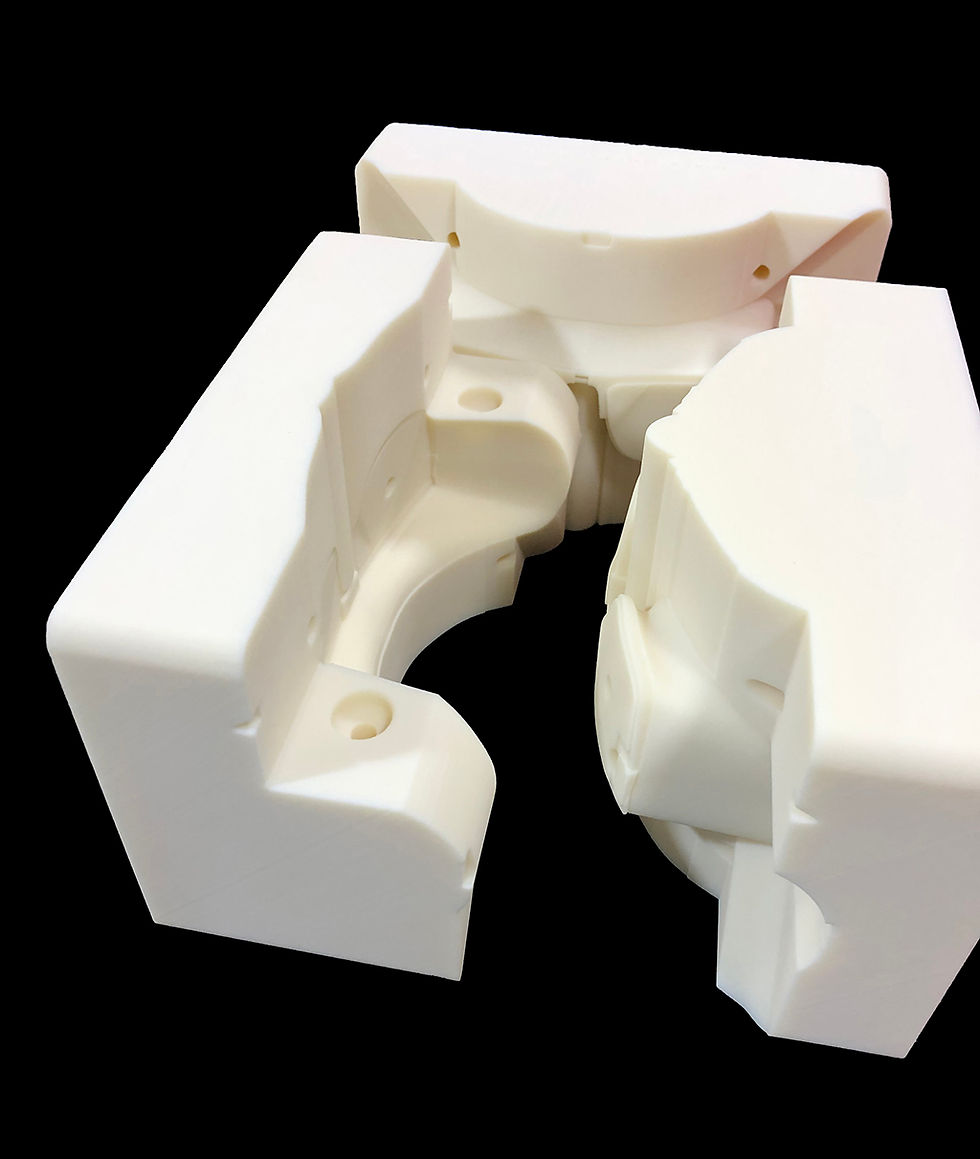[Injection Molding] Low-Volume Rapid Injection Molding with 3D Printed Molds
- Royalforged Solutions
- Aug 6, 2022
- 2 min read
Accelerate product development, reduce costs and lead times, and bring better products to market by incorporating 3D printing and short-run injection molding into your development process.

3D Printing for Injection Molding Applications
Challenges
| Solutions
| Benefits
|

Given the volume and timeline requirements, it was initially assumed that Midwest Prototyping’s substantial urethane casting operation, which often provides a “bridge” between prototyping and low volume projects to larger-scale injection molding, would be the solution. Urethane casting can often meet client demands without having to invest in expensive molds or high-volume processes. In this regard, the urethane team most often uses stereolithography to produce highly detailed master parts as a pattern to create an inexpensive silicon mold for casting multiple copies. In this instance, the client asked for the final parts in silicone rubber, which eliminated the possibility of using a silicone rubber mold. The compressed timeline also didn’t allow for a CNC aluminum mold to be produced. The decision was made to go directly to production by 3D printing the mold. While using 3D printed molds is not novel, using them to produce silicone rubber parts, a process that requires high-temperature curing, was new for Midwest and several key lessons were learned along the way.
From the beginning, Somos® PerFORM was chosen for the mold. Its excellent high-heat tolerance, outstanding detail resolution and stiffness are idea for various applications including tooling, wind tunnel testing, high-temperature applications and electrical. In discussion with the Covestro technical representatives, Midwest was able to work through some of the concerns early in the process and modify its approach when faced with roadblocks.
Despite breaking a few molds in the beginning, Midwest learned a few things:

Thicker is better. Several molds were made, each progressively thicker. It needed to be strong enough to handle the heat of the oven and the pressure of the curing silicone.
Support the mold. Steel backing plates were ultimately used to hold the mold together after the pressure of curing tore apart a mold secured with just bolts and washers. Go easy. It was quickly learned to heat up and cool down the mold slowly and handle the mold more gently than a machined mold for best results.
Vent it. More vents were needed than typical. LSR is very thick and was injected under higher pressure than typical urethane casting materials.
If it isn’t broken, then don’t fix it. Several rounds of poorly cured parts led to the conclusion that the standard Mann 200 mold release was still the right choice versus other suggested options.
Overall, the experience left Midwest confident that it could produce low-volume parts in LSR using 3D printed Somos® PerFORM molds. In fact, another customer LSR project was immediately started after finishing this one with the advantage of the knowledge gained from this project.
Get your parts ready with our instant quotes or manually quotes.

![[Whitepaper] Tesla using 3DXSTAT™ ESD-Safe Filament](https://static.wixstatic.com/media/e42c77_64f83d96c11244c887aeeb4b0402bbb9~mv2.jpg/v1/fill/w_980,h_512,al_c,q_85,usm_0.66_1.00_0.01,enc_avif,quality_auto/e42c77_64f83d96c11244c887aeeb4b0402bbb9~mv2.jpg)
![[Manufacturing] How Is 3D Printing Used in Industrials Manufacturing?](https://static.wixstatic.com/media/e42c77_f3a80a29c0394eeb856b84d0754e7ba3~mv2.jpeg/v1/fill/w_750,h_422,al_c,q_80,enc_avif,quality_auto/e42c77_f3a80a29c0394eeb856b84d0754e7ba3~mv2.jpeg)
![[Automative] How Is 3D Printing Used in Automative](https://static.wixstatic.com/media/e42c77_3afeeafa53874759a0076389cfd239e4~mv2.jpeg/v1/fill/w_750,h_422,al_c,q_80,enc_avif,quality_auto/e42c77_3afeeafa53874759a0076389cfd239e4~mv2.jpeg)
Comments